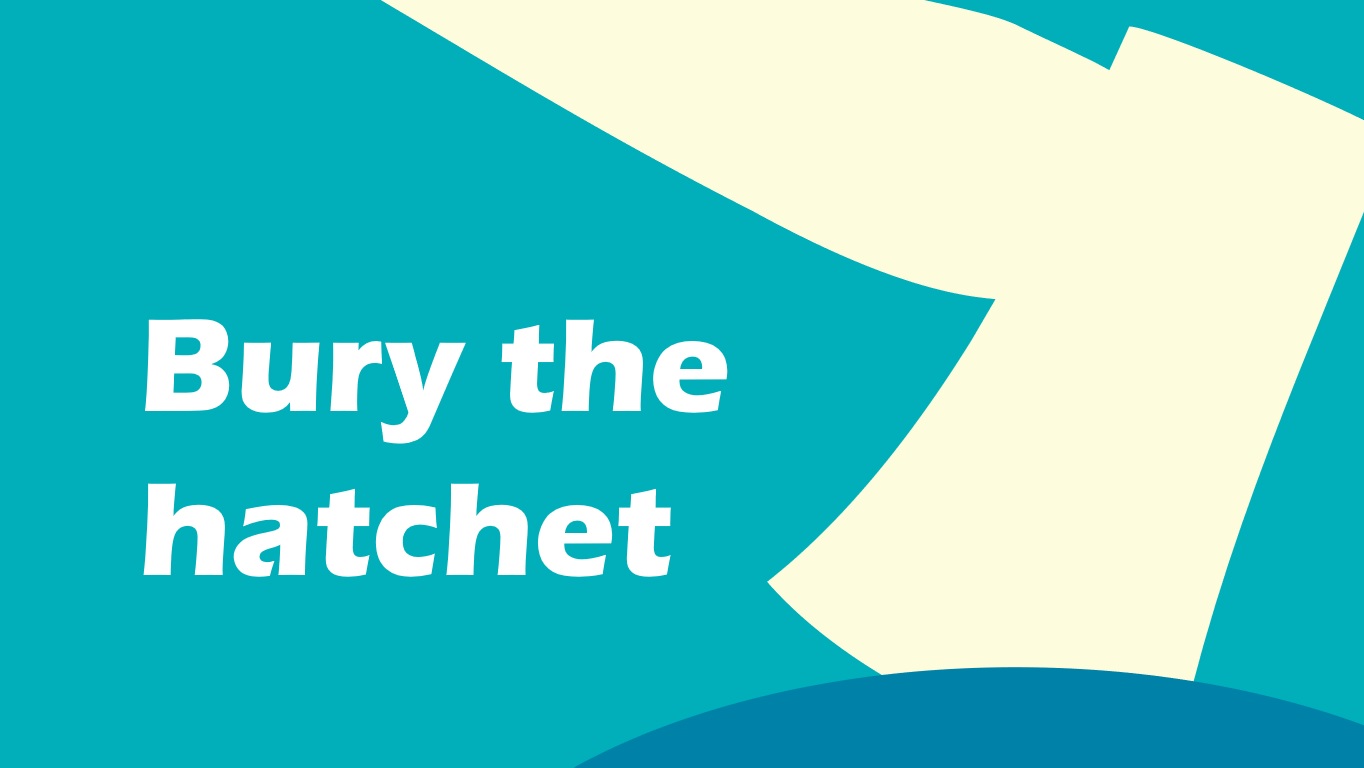Bury the Hatchet
Deganawideh
A hatchet is a small axe (or ax). So, why would someone bury it? Well, this idiom comes from indigenous North Americans. The Iroquois leaders, Deganawideh and Hiwatha convinced the Five Nations to form a confederacy. The Five Nations was a collective of five nations united under the Iroquois Confederacy. The Mohawk, Oneida, Onondaga, Cayuga, and Seneca were part of this union. However, there was a lot of fighting between the groups. The legend of how Deganawideh convinced the nations to unite is fascinating. Through a series of ‘miracles’ he was able to convince the nations that he was sent from heaven to unite them. I have linked the story in the references.
To celebrate the new peace, the Iroquois buried their weapons under the roots of the Tree of Peace. It was a white pine that Deganawideh planted there. An underground river then washed the weapons away so they could not be used against each other again. Among the weapons was tomahawk (Algonquian word), a weapon resembling a hatchet.
The hatchet burying ceremony was noted by European settlers with the first mention showing up in literature in 1644. By 1761, non-Iroquois Natives were conducting the ceremony. In 1761, the French surrendered Canada to the British. Their allies, the Miꞌkmaq, buried the hatchet with the British. The phrase took on its idiomatic meaning by the early 19th Century. In 1807, Aaron Burr testified during a trial, “I had long been persecuted by the General [Wilkinson] but wished to bury the hatchet.”
Bury the Hatchet
The idiom, bury the hatchet, means to make peace. You are burying your past fights, battles, and arguments with the intention of having a good relationship. If you are having an argument with your friend, it might be a good idea to end the argument and forget the mean things you said to each other. This is called burying the hatchet.
Example: I don’t want to fight anymore. Let’s bury the hatchet and be friends.
Day of Truth and Reconciliation
This year, 2021, Canada will introduce a new national holiday. The holiday will be on September 30th of each year. The holiday is called, ‘National Day of Truth and Reconciliation.’ On that day, Canadians will remember the legacy of the residential school system and the survivors of it. Indigenous (native) children of Canada were taken from their families and forced to attend church-run residential schools. Students there experienced physical, emotional, and sexual abuse as well as malnutrition, overcrowding, poor sanitation, lack of health care, and neglect. More than 4,000 of these children are believed to have died at the schools with far more dying shortly after returning home.
Residential schools operated for more than 100 years with the last one closing in 1996. This is not an ancient part of Canadian history. In 2006, The Canadian Government made a formal apology to indigenous people. I am not sure that a national holiday is enough to make up for one of Canada’s darkest secrets. However, I am glad that the government is trying to bury the hatchet.
For more English phrases and quotes, follow me on Facebook:
https://www.facebook.com/ESL-ToyBox-112152010890485
Reference:
https://www.straightdope.com/21343301/what-s-the-origin-of-bury-the-hatchet
https://scttx.com/articles/%E2%80%9Cbury-hatchet%E2%80%9D-neal-murphy
http://www.biographi.ca/en/bio/dekanahwideh_1E.html
https://www.canada.ca/en/department-national-defence/maple-leaf/defence/2021/07/federal-statutory-holiday-national-day-for-truth-and-reconciliation.html
https://globalnews.ca/news/7919602/senate-truth-and-reconciliation-holiday/


